Found on the World Wide Web - Bath, England. In 2011, its population was 88,859. The city became a spa with the Latin name Aquae Sulis ("the waters of Sulis") c. AD 60 when the Romans built baths and a temple in the valley of the River Avon, although oral tradition suggests that the hot springs were known before then. It became popular as a spa town during the Georgian era, leaving a heritage of Georgian architecture crafted from Bath Stone.
Bath became a World Heritage Site in 1987. The city's theatres, museums and other cultural and sporting venues have helped to make it a major centre for tourism with more than one million staying visitors and 3.8 million day visitors to the city each year. The city has two universities and there are large service sector, information and communication technology and creative industries.
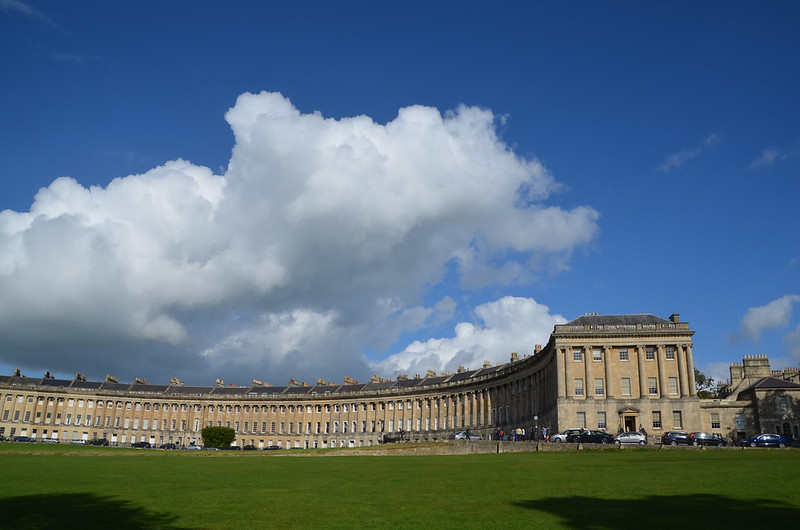
The Royal Crescent is a row of 30 terraced houses laid out in a sweeping crescent in the city of Bath, England. Designed by the architect John Wood the Younger and built between 1767 and 1774, it is among the greatest examples of Georgian architecture to be found in the United Kingdom and is a Grade I listed building. Although some changes have been made to the various interiors over the years, the Georgian stone façade remains much as it was when it was first built.
Many notable people have either lived or stayed in the Royal Crescent since it was first built over 230 years ago, and some are commemorated on special plaques attached to the relevant buildings.
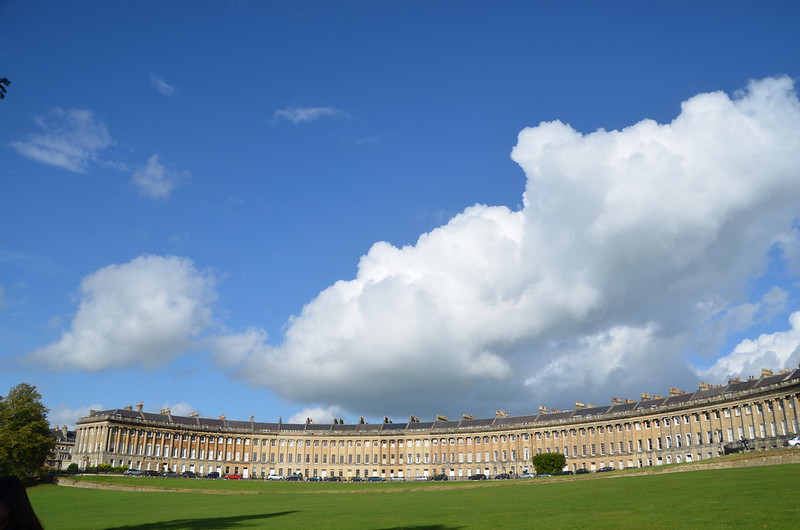
The Royal Crescent now includes a hotel and a Georgian house museum, while some of the houses have been converted into flats and offices. It is a popular location for the makers of films and television programmes, and a major tourist attraction in its own right.
The Royal Crescent is close to Victoria Park. The street that is known today as "The Royal Crescent" was originally named "The Crescent." It is claimed that the adjective "Royal" was added at the end of the 18th century after Prince Frederick, Duke of York and Albany had stayed there.
John Wood designed the great curved façade with Ionic columns on a rusticated ground floor. The 114 columns are 30 inches (76 cm) in diameter reaching 47 feet (14.3 m), each with an entablature 5 feet (1.5 m) deep. The central house (now the Royal Crescent Hotel) boasts two sets of coupled columns.
Each original purchaser bought a length of the façade, and then employed their own architect to build a house behind the façade to their own specifications; hence what can appear to be two houses is occasionally just one. This system of town planning is betrayed at the rear and can be seen from the road behind the Crescent: while the front is uniform and symmetrical, the rear is a mixture of differing roof heights, juxtapositions and fenestration. This architecture, described as "Queen Anne fronts and Mary-Anne backs," occurs repeatedly in Bath.
In front of the Royal Crescent is a ha-ha, a ditch on which the inner side is vertical and faced with stone, with the outer face sloped and turfed, making an effective but invisible partition between the lower and upper lawns. The ha-ha is designed so as not to interrupt the view from Royal Victoria Park, and to be invisible until seen from close by. It is not known whether it was contemporary with the building of the Royal Crescent, however it is known that when it was first created it was deeper than it is at present. You can see the ha-ha in the two photos I've used above.
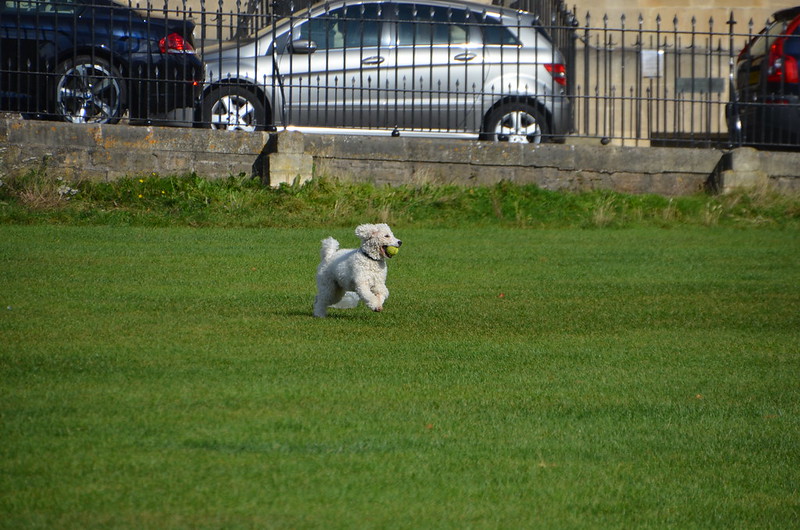
The railings between the crescent and the lawn are included in the Heritage at Risk Register produced by English Heritage and were restored in 2011. This dog and its people had a great time, enjoying our wonderful sunshine!
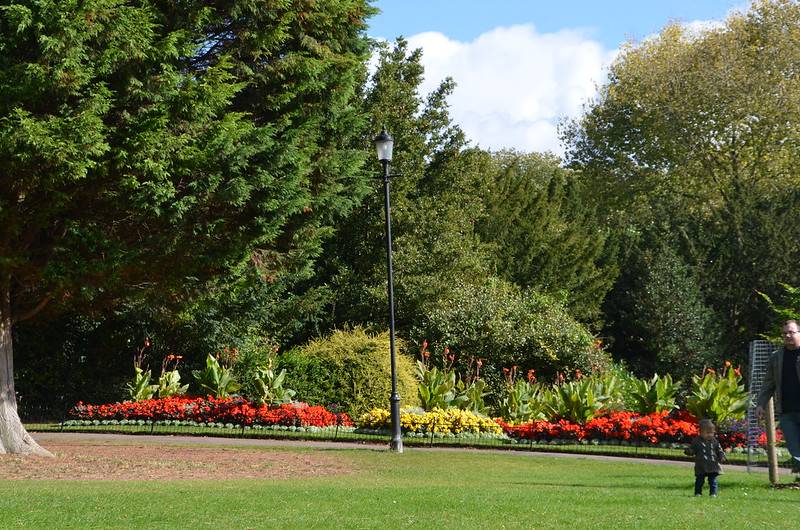
Bright, colorful plants and flowers nearby--between The Royal Crescent and the street. The Royal Crescent is to my left as I took this photo, beyond some trees.

The coach is parked on Royal Avenue--that's Tommy in the tie at the front of the coach. Victoria Park is across the street beyond the coach.
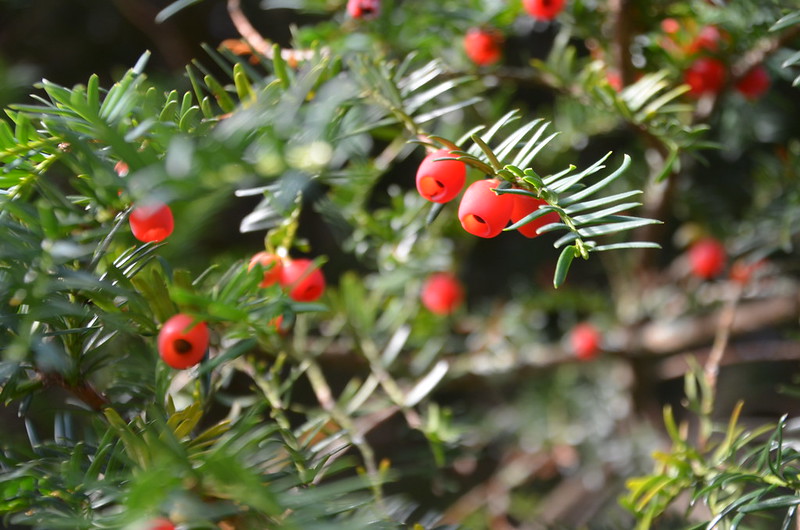
As I made my way back towards the coach, these red berries and green needles caught my eye--it's a yew tree, something I really, really wanted to see in the United Kingdom. Serendipity!

5 comments:
That's quite a building... 2 photos work. Stunning.
Beautiful pictures Lynette! Thanks for sharing and I enjoyed reading all about the history. Unfortunately I didn't get to see as much of Bath as I would have liked when I was there last summer because I fell while touring the Roman Baths. Two very nice young ladies took care of me, but I didn't get to walk around much after my fall and ended up getting pushed back to our tour bus in a wheelchair. I did get to see the Crescent and Jane Austen's place while we were driving around the city though.
Clear, luscious photos!
What a magnificent building!
The dog seems to be thoroughly happy!
Wonderful photos. Looks like a beautiful city.
Post a Comment